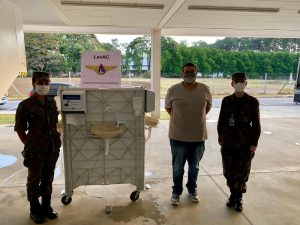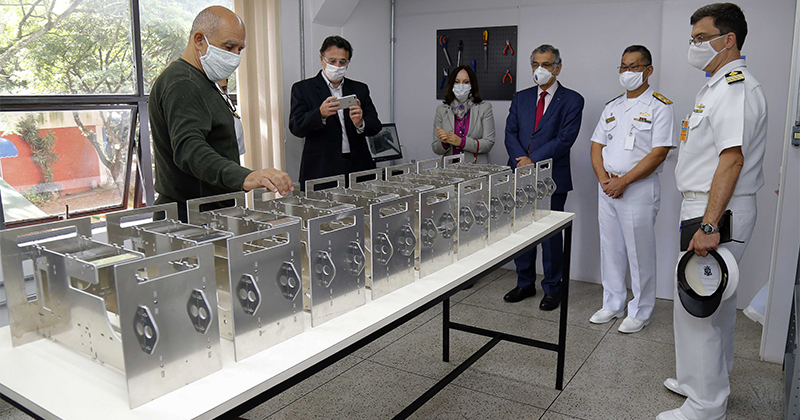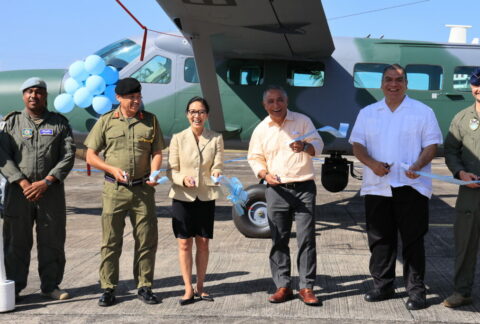The Brazilian Navy (MB, in Portuguese), in partnership with the University of São Paulo (USP), is developing a ventilator that may save the lives of people infected with COVID-19.
A group of engineers belonging to the Nuclear Power Plant Development Project of the first Brazilian submarine with nuclear propulsion designed the technical project and manufactured ventilator prototypes.

The production phase of 10 prototypes and the final ventilator model are complete. “With support from MB, USP now focuses its efforts on acquiring the last critical components and supplies, and works with experts to test and evaluate the equipment,” MB’s Public Affairs Office said.
Once approved, mass production will begin at the facilities of the Navy’s Technological Center in São Paulo (CTMSP, in Portuguese), a military organization on the USP campus. This location also houses MB’s nuclear program. According to initial estimates, CTMSP will be able to produce 25 to 50 ventilators per day.
The emergency ventilator, named Inspire, uses only Brazilian technology at a cost of about $402, which is considerably lower than the price of ventilators sold in Brazil. Another advantage is that it may take as little as two hours to produce a unit.
“The opportunity to participate in this project makes us proud because the Navy’s mission is to protect the Brazilian people,” said MB Vice Admiral Noriaki Wada, CTMSP director. “USP and the Navy have had a successful partnership for 64 years. This milestone is even more special due to the critical times we are living in,” said the officer.
The partnership between MB and USP’s Polytechnic School during the pandemic also includes the production, by the university, of face masks, used as personal protective equipment. MB is responsible for taking protective equipment to health care professionals. So far, MB has distributed 3,000 face masks to public hospitals.
Other innovations
The Technological Institute of Aeronautics (ITA, in Portuguese), a university linked to the Brazilian Air Force (FAB, in Portuguese), is developing other technology to combat the pandemic, including equipment to identify the novel coronavirus in the air. The equipment has a filter that operates within a 50-square-meter area. The air samples collected are analyzed by a lab, which identifies the virus and other microorganisms. This project is based on existing technology used to monitor radiological clouds to detect radiation.
While developing the new equipment, ITA designed a portable handwashing station. The structure, built on wheels, has a water tank, four sinks, and a liquid soap dispenser. The water is pumped by a foot pedal and the soap is dispensed when the lever is activated by the elbow.
The handwashing station was created for emergency use in places where handwashing is difficult, but the goal is to implement it with other innovations. “As an extension of the project, we will study technologies to create a water recycling system to increase the capacity of the handwashing station,” said FAB First Lieutenant Dafne de Brito Cruz, instructor for the ITA’s Department of Water Resources and Environmental Sanitation.









